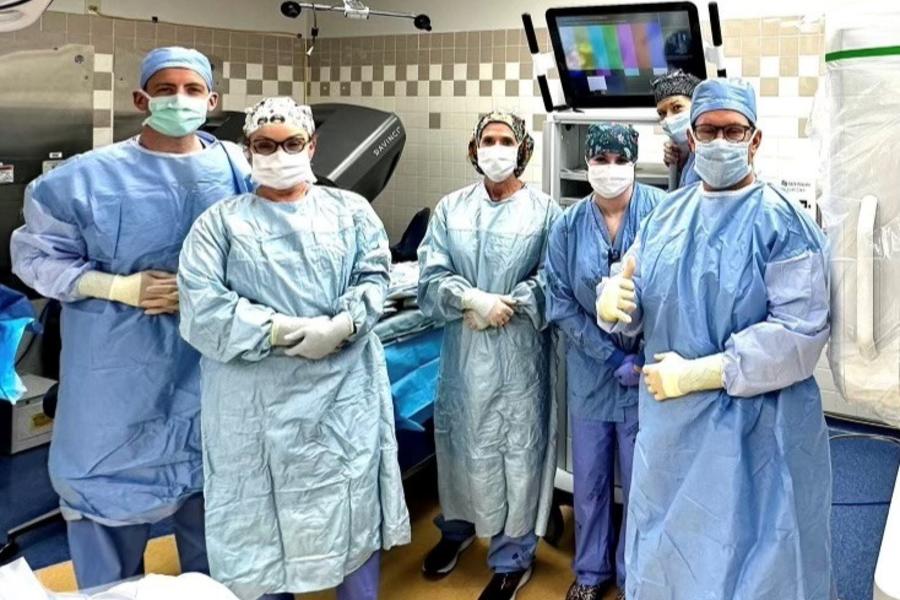
L-R: Dr. Michael Stencel, Tina Lane, Marian Campbell, Emma Bowles, Pam Walker, Dr. Nathan Hale
The CAMC robotics program has been growing since the first robot was installed in 2007. With this newest robot, the incisions are shrinking. In March, urologists used a single-port version of the daVinci robot to assist with surgery.
The single port (hence the name) uses only one small incision as opposed to 4-5 smaller incisions to do all the same work.
“It’s technically more demanding on the surgeon as we learn the new technique, but the patient benefit is worth it,” said Samuel Deem, DO, MBA, CAMC Director of Robotic Surgery. “Smaller and/or fewer incisions cause less pain and allow quicker discharge (usually same day) and faster healing.”
Currently the single port robot is FDA approved for urology cases. Other specialties (such as gynecology and general/colorectal surgery) will have to perform the procedures as part of a clinical trial under IRB supervision, which CAMC is pursuing.
“CAMC has always allowed us the opportunity to be at the forefront of providing state-of-the-art care,” Deem said. “By purchasing seven daVinci robots, including the single port technology, we are driving innovation in the community and state allowing access to the same care provided in larger metropolitan areas.”
In 2023, the Surgical Review Corporation reaccredited CAMC as a Center of Excellence in Robotic Surgery.
CAMC launched the first multispecialty robotic surgery program in West Virginia in 2007 and now has eight robots assisting surgeons: four robots at CAMC Memorial Hospital, two at CAMC Women and Children’s Hospital, one at CAMC General Hospital and one at CAMC Plateau Medical Center.
Since the robotics program began, surgical specialists practicing at CAMC have used robots for more than 8,500 procedures and are currently performing more than 700 procedures each year.
CAMC offers multiple procedures with each specialty including several oncologic procedures such as colon resection, esophageal cancer, lung cancers and mediastinal masses, prostate, bladder, and kidney cancers, as well as hysterectomy, oophorectomy and lymph node removal for gynecological cancers.



